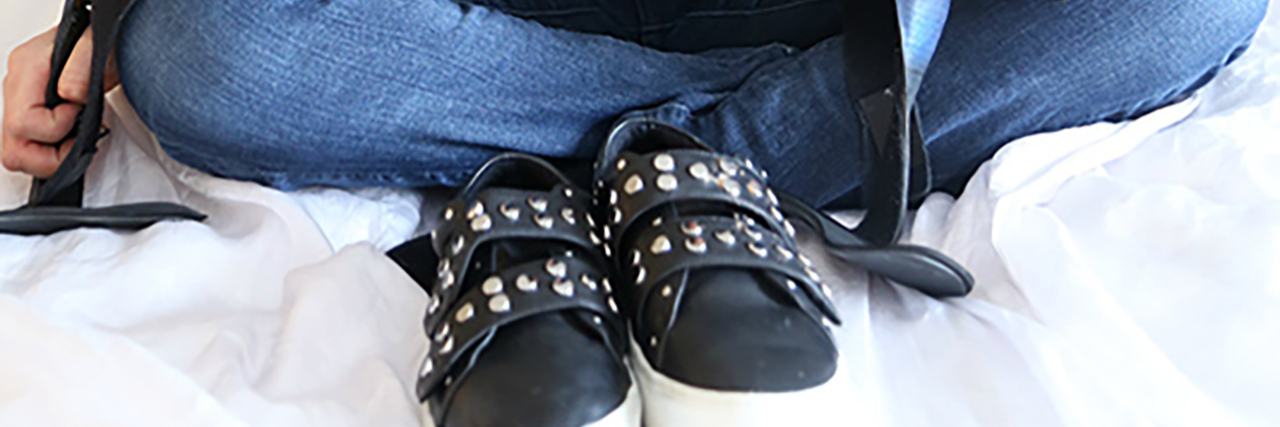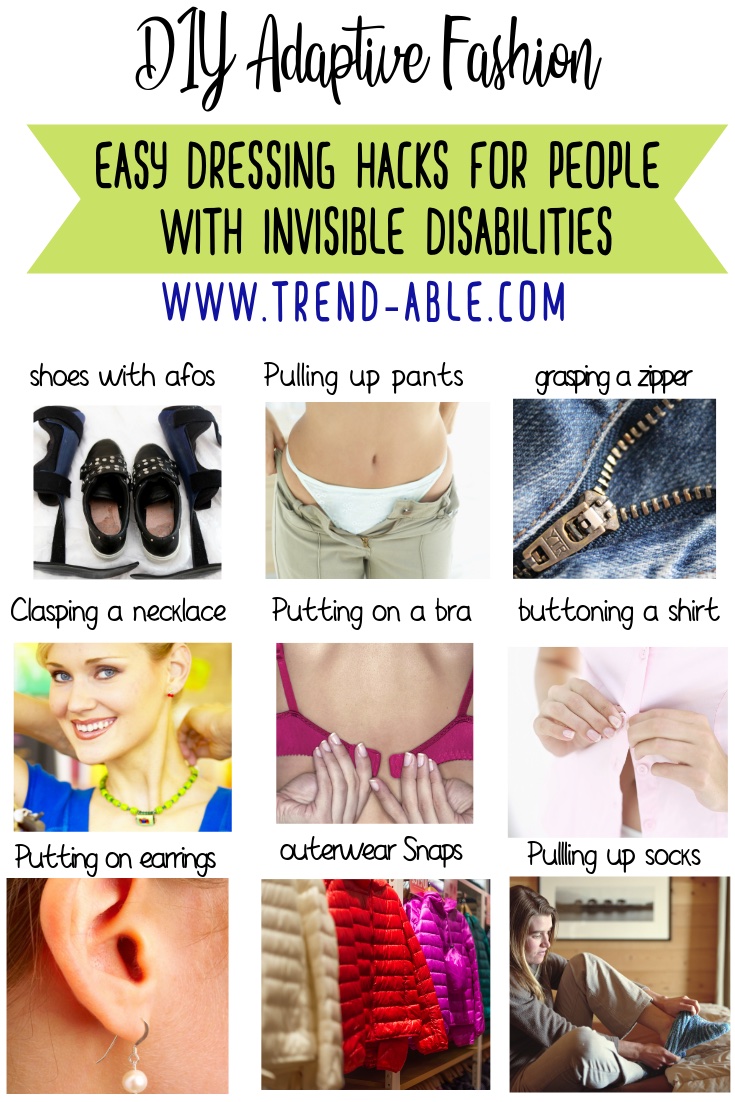
Until recently, fashion and disability was pretty much an oxymoron. The clothing available for people with physical challenges called “health wear” was found in home medical supply stores next to other functional items like incontinence supplies and shower seats. The adapted clothing of yesteryear was the antithesis of fashionable. It lacked color, style and the ability to express one’s individual personality.
Despite the fact that 40 million people in the U.S. have a disability, and more than 14 million of them have difficulty with dressing, adapted clothing didn’t become a newsworthy thing until 2014, when a few regular people (Mindy Scheier of Runway of Dreams and Maura Horton of Magna Ready) inspired by their loved one’s struggles with dressing themselves, collaborated with mainstream designer Tommy Hilfiger on a line of adaptive clothing for people with disabilities.
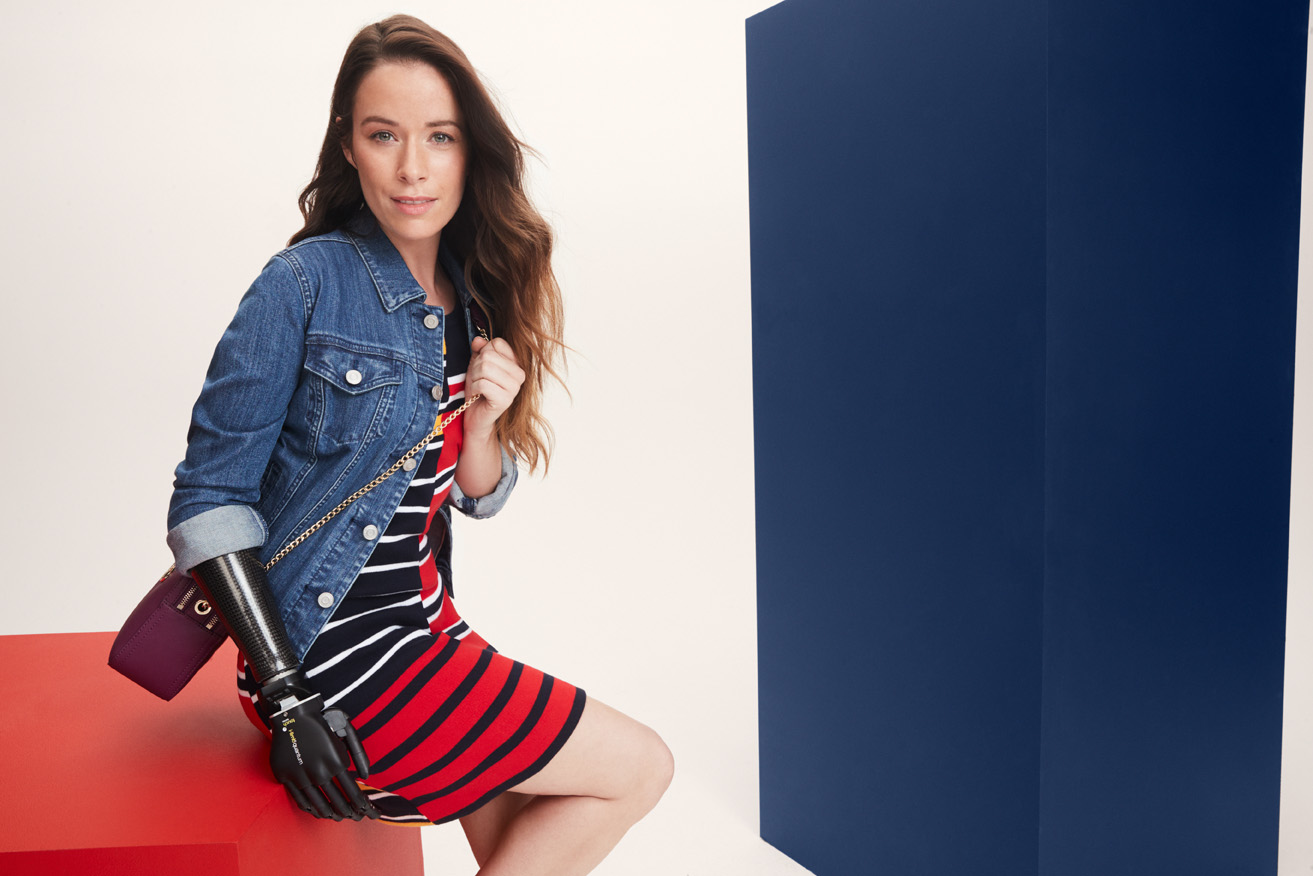
Like many of you, I have been adapting my own fashion for years. I have a progressive, inherited neuromuscular disorder, Charcot-Marie-Tooth disease. I’ll never forget the traumatic day I received my first set of leg braces (AFOs), and the blank stare and shoulder shrug response I received when I inquired about where I could find fashionable shoes and clothing to fit over the bulky plastic monstrosities I’d been handed. The orthotist didn’t have a clue and shewed me out the door with a two seasons old orthotic shoe catalog in hand.
That was my introductory lesson on how the world valued fashion for people with disabilities. It was seen as unimportant and frivolous. I learned that if I wanted to prevent my disabilities from dictating my personal style, it was up to me to find my own shoe and fashion adaptations. This is a big part of why I created Trend-Able.com.
Although there are now a growing number of brands designing for people with disabilities, most of what’s out there is for geared for children, wheelchair users and the elderly. There’s not much for me, Lainie Ishbia, an active, young in spirit, 48-year-old blogger mom and wife who happens to wear leg braces and has sucky hands. And besides, I want to wear what I want to wear.
Until the unlikely day that every single brand offers adaptive fashion options on all their designs, I’ll continue to make my own adaptations. Due to my limited hand coordination, I outsource the actual sewing and hacking of my clothing out to a local seamstress. In exchange for a few dollars (and a ton of referrals), she happily adds Velcro, sews up buttons and tells me I still look 30. Admittedly, I do pay a tad extra for the latter part.
Do you want to know some easy fashion hacks and modifications you can outsource too? If so, welcome to my mini-course, Adaptive Fashion 101.
How to Pull Up Pants and Other Bottoms
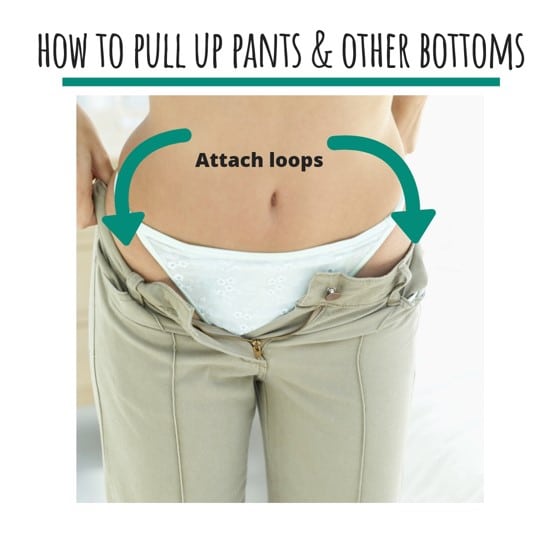
If you have difficulty getting pants up and down, one easy solution is to have fabric loops sewn onto each side of the waistband. This discreet adaptation allows a person with hand weakness the leverage to pull them up by sliding their hands inside the loops.
Elastic waist pants are easier to pull up and down as they can stretch over hard to pull up areas (like my hips and thighs). One tip for finding fashionable styles of elastic waist pants that don’t look matronly or scream high school gym class is to shop at stores that specialize in athleasure-wear, like Athleta or Lululemon. That’s where I got my my favorite pair of elastic waist pants (I have five pairs in every color) that fit over my leg braces. By cutting off the drawstring, they look dressier and can be worn outside of a gym.
How to Grasp Zippers
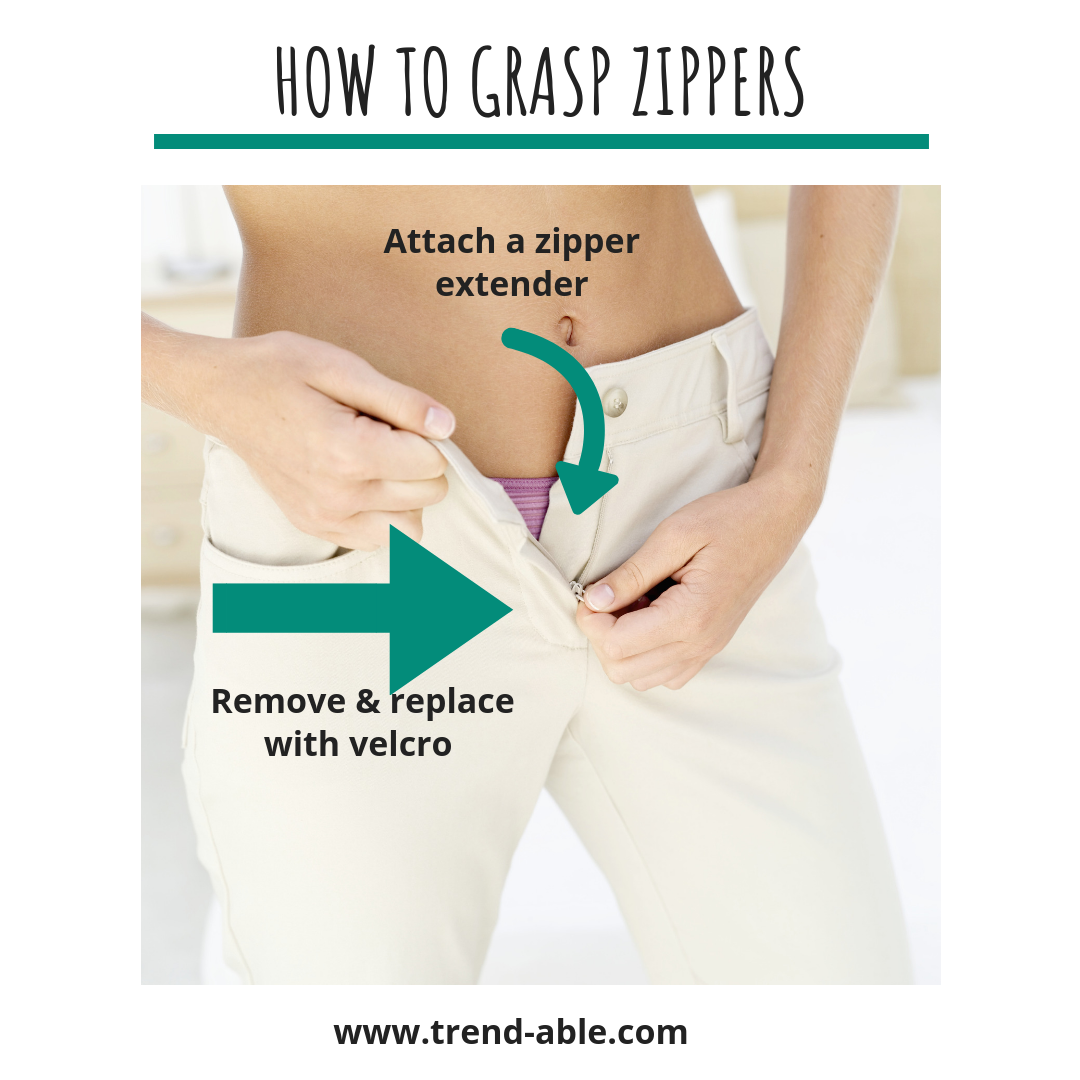
Anyone with hand weakness knows that All Zippers Are Not Created Equal. One easy modification to a hard to grasp zipper is to attach a zipper extender. Zipper extenders are easy to make yourself or find.
If you choose to go the DIY route, you can simply attach a piece of nylon cording to the end of a zipper pull and make a small loop that’s easier to grab. For denim zippers, another DIY option is to attach a metal key ring to the zipper. You can also purchase pre-made decorative zipper pulls like a tassel that look trendy and purposeful. For hard to reach areas like zippers found on the back of shirts and jumpsuits, you can always remove the zipper completely and have it replaced with Velcro.
How to Put on Jewelry
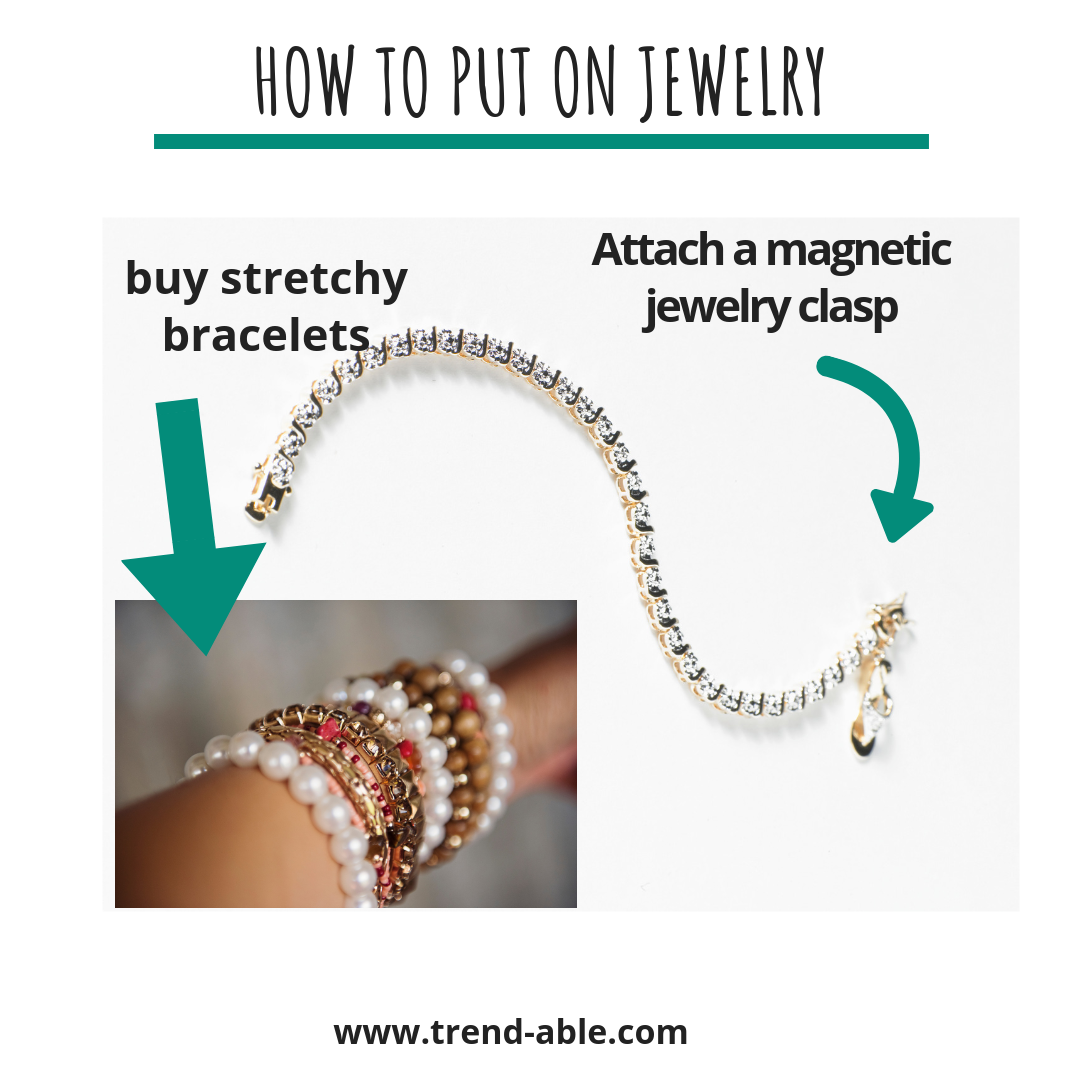
When getting dressed independently is difficult, one of the first things people with disabilities tend to give up wearing are accessories. Putting on a necklace or bracelet is viewed as an extra and unnecessary frustration. But the addition of a colorful necklace or fabulous heirloom piece allows a person to show their personality and express who they are outside of having a disability.
Magnetic attachments are a simple modification for jewelry clasps found on necklaces and bracelets.
When you have poor fine motor skills and the lack of a pincher grip, earrings are nearly impossible to put on. But there are a few options. If you’re a diamond stud kind of woman, you could just leave them in semi-permanently. I have a tiny nose ring (done on a whim in Vegas years ago) and have literally never removed it. I use my go-to extra long cotton swabs to clean around it occasionally and honestly forget it’s there. But if you’re a big hoop kind of girl like myself and like to change it up, I have found that my large gold hoops with lever back closures are way easier to put on and don’t fall off.
Buttons and Snaps
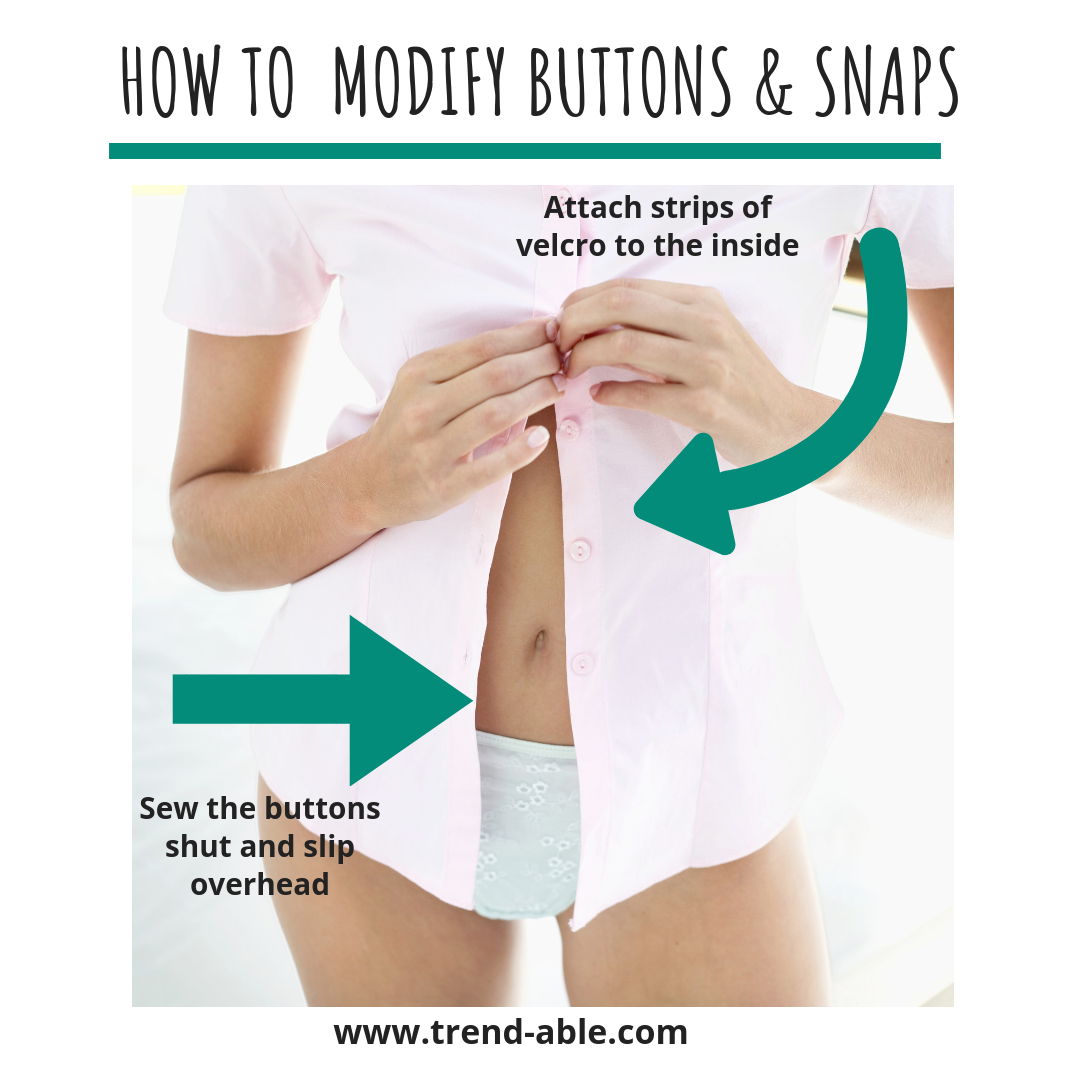
For someone wanting the look of a button down shirt but who has difficulty with buttoning, there are a couple of easy solutions. You could just sew the buttons shut and slip the shirt on overhead, or you can have Velcro sewn along the button line. Both of these options leave the illusion of a button down shirt without the frustration. Of course, they do make buttoning tools that work well when you just have a few buttons to do. Velcro is also a great replacement for clothing pieces with snaps. Again you can leave the original hardware and simply add the Velcro to the underside of the item.
Pulling Up Socks
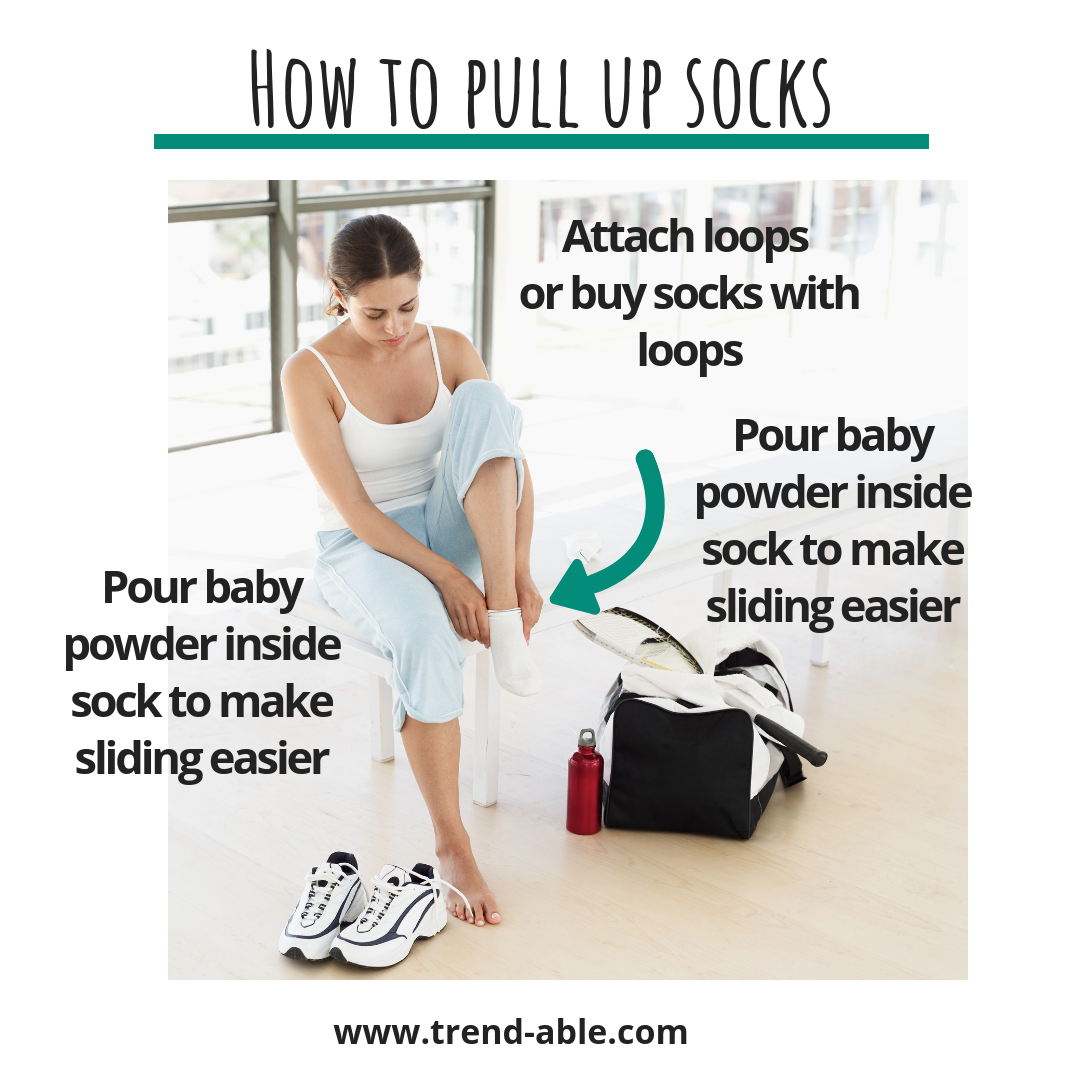
I know putting on socks is a big frustration for many people with disabilities. They do sell sock assist tools that might be helpful for people who have difficulty with bending and/or lifting their legs. Unfortunately these tools may not be as helpful for people with a weak hand grasp.
You can make it easier to pull up socks using socks with loops or by going the DIY route and attaching loops to your socks of choice.
Putting on a Bra
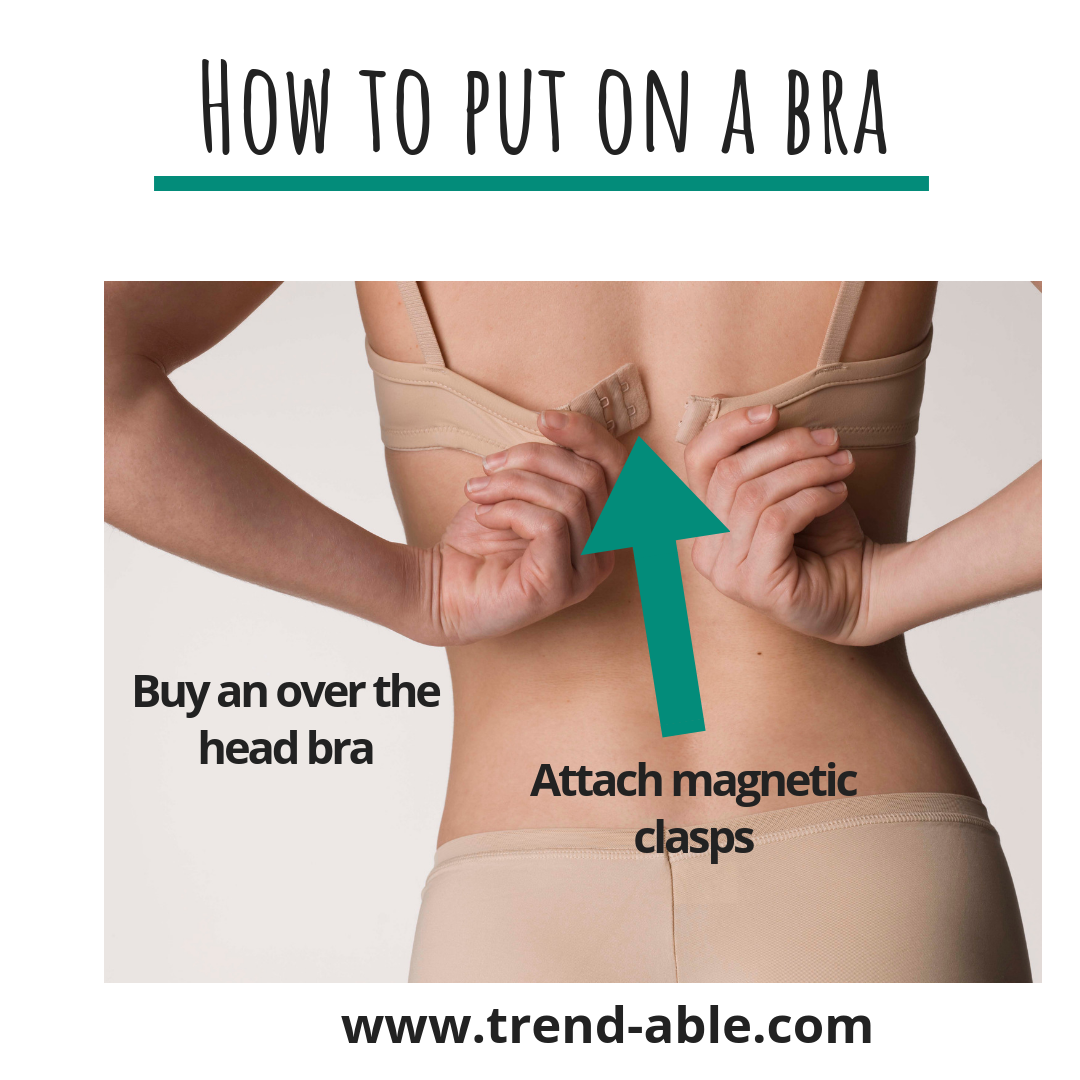
A huge frustration for women with disabilities is putting on brassieres. Many adaptive bra options available are unattractive (look like nursing bras) and lack the lift and support most of us want. One option is to buy a great over the head no seam bra with support, or modify a front closure bra by simply cutting off the closure and attaching either strong Velcro or magnetic bra attachments.
How to Find Cute Shoes and Clothes That Work With Orthotics
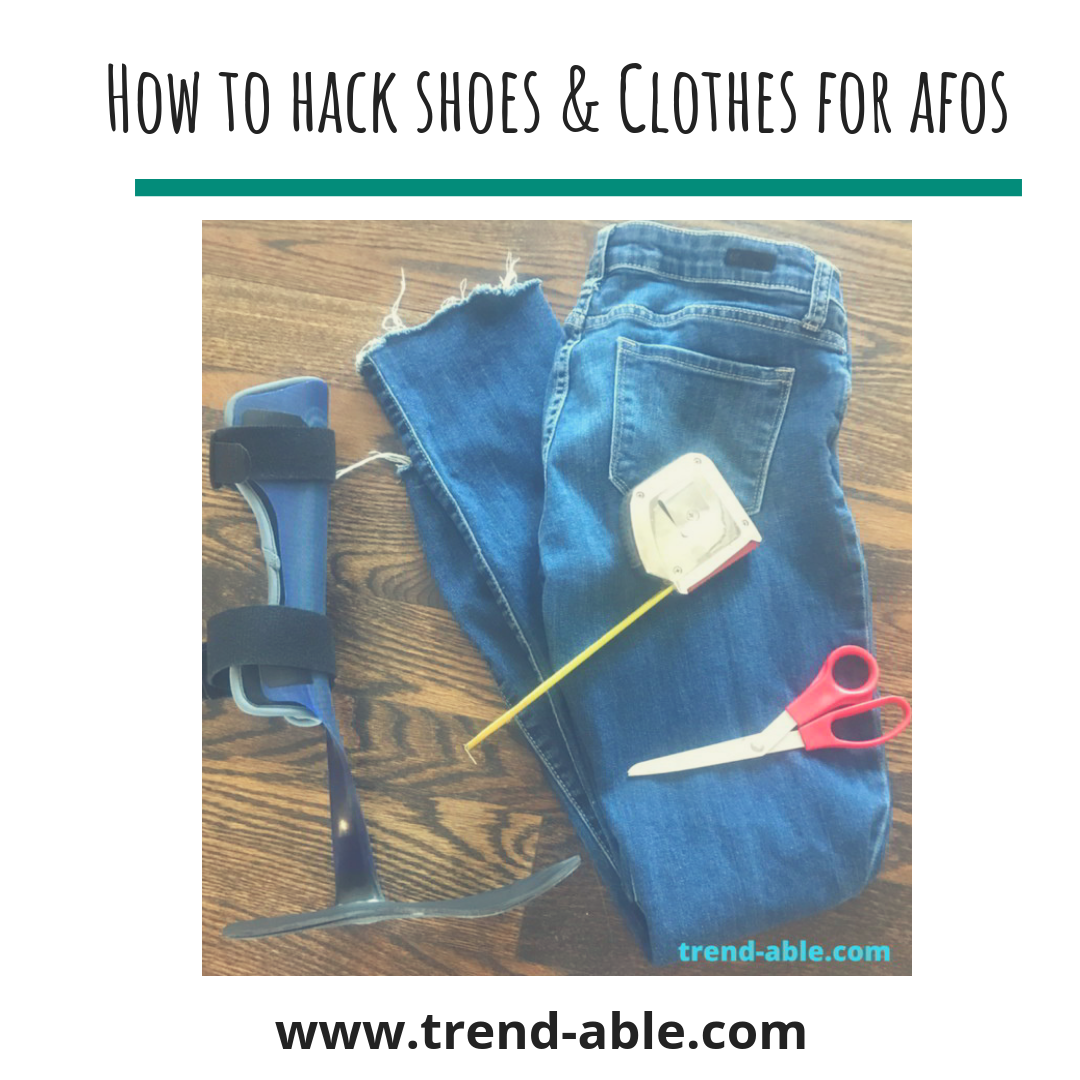
There are several shoe and life hacks for people who wear AFOs/leg braces. Just because someone wears AFOs or orthotics does not necessarily mean they have to wear sneakers 24/7.
Here are a few tips for finding shoes that are comfortable and fashionable:
• Buy extra wide-width shoes at plus size stores
• Remove insoles
• Look for shoes with Velcro, laces or other adjustable type opening
• Glue foam insoles to braces to wear sandals without socks
• Buy boots in a size larger than regular shoe size.
• You can conceal AFOs (if desired) with many styles of denim and even adapt your old jeans to make them trendy.
Conclusion

Congratulations!
You have completed the class and get the idea of thinking outside of the box when you have a disability. You are ready for the next level and to start hunting for fashionable options that work for you!

